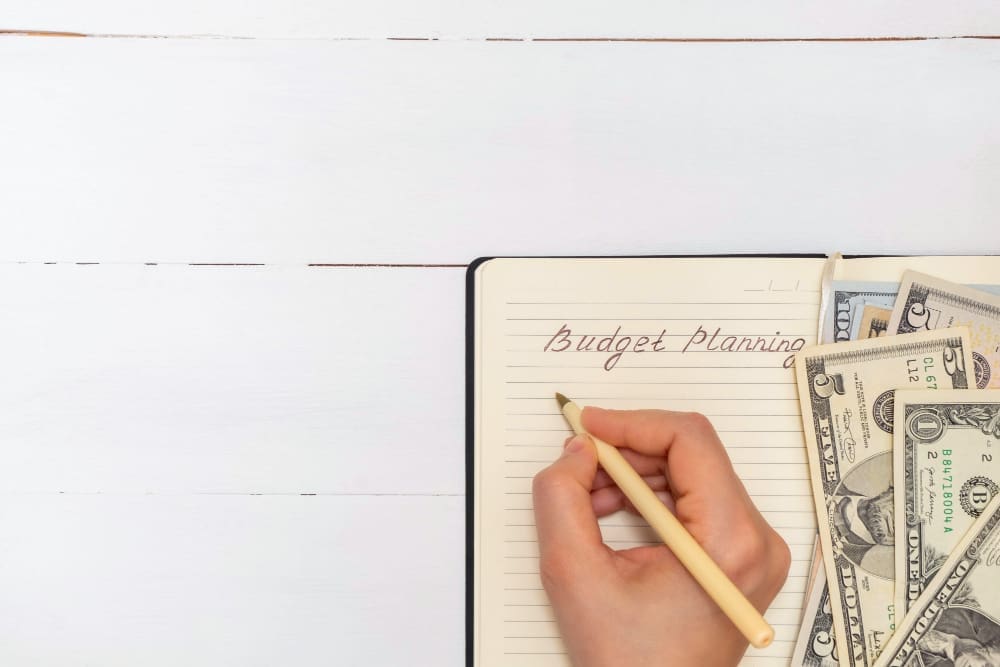Creating a budget is the fundamental first step toward achieving financial wellness, providing a clear roadmap for anyone looking to gain control over their money, eliminate debt, and build wealth. For beginners, the process involves tracking all sources of income, meticulously identifying and categorizing every expense, and then creating a realistic spending plan that aligns with personal financial goals. This plan, which can be managed with tools ranging from simple notebooks to sophisticated apps, empowers individuals to make conscious decisions about their money, ensuring their spending reflects their priorities. By starting now, you can transform your financial future from one of uncertainty to one of intention and control.
Why Budgeting is Non-Negotiable for Financial Health
Many people view a budget as a financial straitjacket, a tool designed to restrict spending and eliminate fun. However, this perspective misses the point entirely. A well-crafted budget isn’t about restriction; it’s about empowerment. It is the single most effective tool for understanding exactly where your hard-earned money is going each month.
Without a budget, you are essentially navigating your financial life blindfolded. You might feel like you’re earning a good income, yet constantly wonder why you have little to show for it at the end of the month. A budget removes the guesswork, providing a detailed and honest look at your financial habits.
This clarity is the foundation upon which all major financial goals are built. Whether you aim to pay off high-interest credit card debt, save for a down payment on a home, or build a robust retirement nest egg, a budget is the blueprint that shows you how to get there. It helps you identify wasteful spending and redirect those funds toward the things that truly matter to you.
Getting Started: Gathering Your Financial Information
Before you can build your plan, you need to know your starting point. This initial phase is all about data collection. It requires a bit of upfront work, but this diligence will pay dividends by making the rest of the process smoother and more accurate.
Calculate Your Total Monthly Income
The first piece of the puzzle is understanding how much money you have coming in each month. Gather your pay stubs, bank deposit records, and any documentation related to other income streams. Your total income is the sum of all money you receive after taxes and other deductions from your paycheck (your net pay).
Sources of income can include your primary salary, income from a side hustle or freelance work, child support, or any other regular cash inflow. If your income is variable—common for freelancers, commissioned salespeople, or gig economy workers—it requires a slightly different approach. A safe method is to calculate your average monthly income over the past six to twelve months or, for a more conservative budget, use the lowest income you’ve earned in a single month during that period.
Track Your Expenses: The Foundation of Your Budget
This is the most crucial and often most eye-opening step. You must gain an accurate understanding of where your money is going. To do this, you need to track every single dollar you spend for at least one full month. The longer you track, the more accurate your picture will be.
Comb through your bank and credit card statements from the last 30 to 90 days. Don’t forget to account for cash purchases. You can use a dedicated notebook, a spreadsheet, or a budgeting app that automatically syncs with your bank accounts to make this process easier. Be thorough and honest with yourself; that daily coffee or occasional vending machine snack adds up.
The Step-by-Step Guide to Building Your First Budget
With your income and expense data in hand, you are now ready to construct your budget. This is where you transition from simply observing your finances to actively managing them.
Step 1: Categorize Your Spending
Go through your tracked expenses and group them into logical categories. This will help you see patterns in your spending. A common way to organize these is by separating them into fixed and variable expenses.
- Fixed Expenses: These are costs that generally stay the same each month. They are predictable and often non-negotiable. Examples include rent or mortgage payments, car loan payments, insurance premiums, and subscription services like Netflix or a gym membership.
- Variable Expenses: These are costs that fluctuate from month to month based on your usage and choices. Examples include groceries, gasoline, dining out, entertainment, and utilities (like electricity and water).
- Occasional Expenses: Don’t forget the irregular costs that pop up throughout the year, such as holiday gifts, car repairs, annual memberships, or vacations. A great way to handle these is with “sinking funds”—where you set aside a small amount of money each month into a dedicated savings account for these future expenses.
Step 2: Choose Your Budgeting Method
There is no single “best” budget for everyone. The most effective budget is the one you can stick with consistently. Here are three popular and effective methods for beginners.
The 50/30/20 Rule: A Simple Framework
This method is excellent for its simplicity and flexibility. It divides your after-tax income into three broad categories:
- 50% for Needs: Half of your income is allocated to essential living expenses. This includes housing, utilities, transportation, groceries, and insurance.
- 30% for Wants: This portion is for lifestyle choices and discretionary spending. It covers things like dining out, hobbies, shopping for non-essentials, and entertainment.
- 20% for Savings & Debt Repayment: At least one-fifth of your income should go toward financial goals. This includes building an emergency fund, contributing to retirement accounts, saving for a down payment, and paying off debt beyond the minimum payments.
The Zero-Based Budget: Giving Every Dollar a Job
This is a more meticulous approach that appeals to those who want maximum control. The principle is simple: your income minus your expenses should equal zero. At the start of each month, you assign every single dollar of your anticipated income to a specific category—be it an expense, a savings goal, or a debt payment.
This doesn’t mean you spend everything you earn. “Savings” and “extra debt payments” are categories you assign money to. This method forces you to be intentional with every dollar, leaving no room for mindless spending.
The Envelope System: A Cash-Based Approach
For those who struggle with overspending on debit or credit cards, the envelope system can be a powerful tool for discipline. After paying your fixed bills, you withdraw cash for your variable spending categories (like groceries, gas, and entertainment) and place the allotted amount into separate, labeled envelopes.
Once the cash in an envelope is gone, you cannot spend any more in that category until the next month. This provides a hard, physical limit that makes it impossible to overspend. Many banking apps now offer digital versions of this concept, allowing you to create virtual “envelopes” or “buckets” for your spending categories.
Step 3: Analyze and Adjust
Your first budget is a first draft, not a final contract. Once you’ve laid it all out, compare your planned spending to your actual income. If your expenses exceed your income, you must make adjustments. Look at your “wants” category first—this is the easiest place to find areas to cut back, such as reducing how often you eat out or canceling unused subscriptions.
Be realistic. If you try to cut your spending too drastically, you risk burnout and may abandon the budget altogether. The goal is to create a sustainable plan. It’s better to make small, consistent cuts than a massive, unrealistic one that you can’t maintain.
Tools and Technology to Simplify Budgeting
Modern technology has made budgeting easier than ever. While pen and paper is a valid option, digital tools can automate much of the work.
Budgeting Apps and Software
Applications like Mint, YNAB (You Need A Budget), and Personal Capital can automatically sync with your bank and credit card accounts. They categorize your transactions, track your spending against your budget in real-time, and provide visual reports on your financial health. Many also offer features for goal setting and bill reminders.
Spreadsheets: The Customizable Classic
For those who prefer a more hands-on, customizable approach, a simple spreadsheet in Google Sheets or Microsoft Excel is a powerful tool. You can build your own from scratch or find hundreds of free, pre-made budgeting templates online that you can tailor to your specific needs.
Maintaining Your Budget for Long-Term Success
Creating a budget is a one-time task, but budgeting is an ongoing habit. Sticking with it is where the real transformation happens.
Schedule Regular Check-Ins
Set aside time each week—even just 15 minutes—to review your spending and make sure you are on track. At the end of each month, hold a “budget meeting” with yourself (and your partner, if applicable) to review the past month’s performance and create the budget for the upcoming month.
Be Flexible and Forgive Yourself
Life is unpredictable. An unexpected car repair or medical bill can throw your budget off course. When this happens, don’t give up. Adjust your plan for that month, pulling from other categories if necessary, and get back on track as soon as you can. A single bad month does not equal failure. Budgeting is a skill that improves with practice.
Conclusion
A budget is far more than a list of numbers; it is a declaration of your priorities and a dynamic tool for building the life you want. By diligently tracking your income and expenses, choosing a method that suits your personality, and consistently reviewing and adjusting your plan, you move from being a passive spectator of your financial life to an active, empowered participant. Taking this first step to create a budget is the most significant investment you can make in your own financial well-being.







